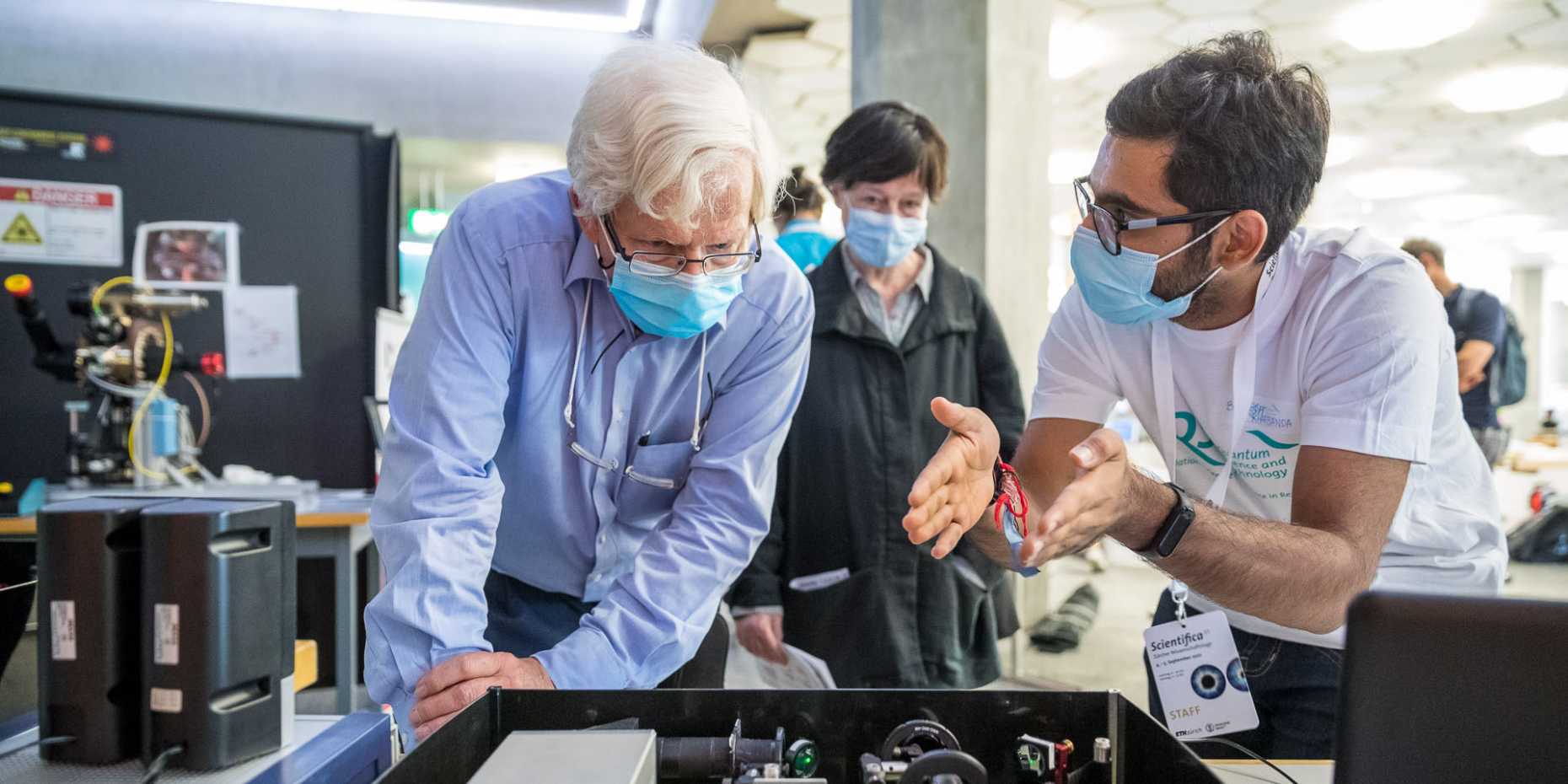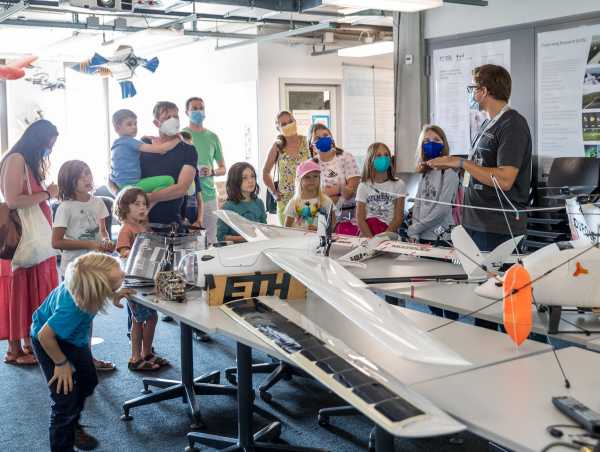On artificial skin and natural packaging
For the first time, visitors to Scientifica had the chance to experience up close recent scientific developments at three locations. The large numbers of visitors showed the huge public appetite that exists for direct interaction with researchers.

Is breast milk better for babies than artificial substitutes? Could robots one day make better judges than humans? And how does one manufacture skin tissue for transplants? These and other questions relating to the theme of “Synthetic – naturally” were the issues that interested visitors at Scientifica this weekend. The science festival took a more expansive form than in previous years: the fair took place for the first time not only in the two main buildings in the city centre, but also on the Hönggerberg and Irchel campuses. As they browsed more than 60 exhibition stands, visitors had the chance to gain insights into current research projects, try out brand new technology and chat directly with the scientists.
Interest in interaction is huge
The opportunity was taken up with enthusiasm: thousands visited the Zurich Science Days, organised jointly by the University of Zurich and ETH Zurich for the seventh time. In addition to the exhibition stands and about 50 short presentations, this year the discussion forums and workshops were particularly popular. At a number of Science Cafés, researchers and the public discussed topics such as modern vaccines, animal testing and public education after Covid; in the workshops, visitors produced plant-based packaging materials themselves and took on the role of virtual animals.
The special activities on offer for families were also well received: besides a visit to the Soap Bubble Factory and a physics show about natural phenomena, children could also take part in a workshop on medicinal plants or test cutting-edge robots.
Organisers draw a positive conclusion
The fact that the event was able to draw in so many people – particularly children and young people – was a source of delight to the organisers: “Remaining in dialogue with an engaged, interested local population is essential for our universities – particularly at a time when rapidly developing crises challenge and accelerate our research and thus raise many social questions. Scientifica offers the ideal platform for this,” says Elisabeth Stark, Vice President Research at the University of Zurich. Detlef Günther, Vice President for Research at ETH Zurich, adds: “Never before have so many researchers taken part in Scientifica as this year. I am pleased about this – it shows that our scientists are very interested in presenting their research to visitors and entering into a dialogue with them.”
In the week leading up to this year’s festival, there was also a warm-up programme organised together with the City of Zurich. The "Science and the City" events provided insights into the city of the future.
In order to protect attendees at this year’s Scientifica, all visitors had to show a Covid certificate and wear a mask. The University of Zurich and ETH Zurich are planning to host the Zurich Science Days again in 2023.
Impressions Scientifica 2021






High resolution mages of this year’s Scientifica can be found here. You may use the images for your own coverage with the credit: Alessandro Della Bella / Scientifica.
Comments
No comments yet